- News
- Reviews
- Bikes
- Accessories
- Accessories - misc
- Computer mounts
- Bags
- Bar ends
- Bike bags & cases
- Bottle cages
- Bottles
- Cameras
- Car racks
- Child seats
- Computers
- Glasses
- GPS units
- Helmets
- Lights - front
- Lights - rear
- Lights - sets
- Locks
- Mirrors
- Mudguards
- Racks
- Pumps & CO2 inflators
- Puncture kits
- Reflectives
- Smart watches
- Stands and racks
- Trailers
- Clothing
- Components
- Bar tape & grips
- Bottom brackets
- Brake & gear cables
- Brake & STI levers
- Brake pads & spares
- Brakes
- Cassettes & freewheels
- Chains
- Chainsets & chainrings
- Derailleurs - front
- Derailleurs - rear
- Forks
- Gear levers & shifters
- Groupsets
- Handlebars & extensions
- Headsets
- Hubs
- Inner tubes
- Pedals
- Quick releases & skewers
- Saddles
- Seatposts
- Stems
- Wheels
- Tyres
- Health, fitness and nutrition
- Tools and workshop
- Miscellaneous
- Buyers Guides
- Features
- Forum
- Recommends
- Podcast
review
£3,600.00
VERDICT:
Lightweight and efficient road bike that offers fast responses and an excellent ride quality
Weight:
7,300g
Contact:
At road.cc every product is thoroughly tested for as long as it takes to get a proper insight into how well it works. Our reviewers are experienced cyclists that we trust to be objective. While we strive to ensure that opinions expressed are backed up by facts, reviews are by their nature an informed opinion, not a definitive verdict. We don't intentionally try to break anything (except locks) but we do try to look for weak points in any design. The overall score is not just an average of the other scores: it reflects both a product's function and value – with value determined by how a product compares with items of similar spec, quality, and price.
What the road.cc scores meanGood scores are more common than bad, because fortunately good products are more common than bad.
- Exceptional
- Excellent
- Very Good
- Good
- Quite good
- Average
- Not so good
- Poor
- Bad
- Appalling
The Merida Scultura 7000-E is a lightweight and reactive race bike that combines high frame rigidity with plenty of comfort. Merida also boasts that it offers good aerodynamic efficiency.
> Find your nearest dealer here
The Scultura is a great bike. I've said it before (probably) and I'll say it again (almost certainly): as a road bike brand, Merida is underrated here in the UK. The Meridas that we review on road.cc almost invariably impress us highly, and the Scultura is among the best of 'em.
Why? It performs superbly and feels great from the moment you climb aboard until the end of your ride.
In what way? Okay, I'm coming to that.
The first thing to say is that the Scultura accelerates and climbs well. Our size 56cm review bike, built up with a Shimano Ultegra Di2 groupset and DT Swiss R23 Spline alloy wheels, came in at 7.3kg, or 16.1lb for those who still call a Snickers bar a Marathon. I mean, we get plenty of lighter bikes passing through these parts, but that's a highly respectable figure.
Weight is far from everything, though. In fact, it doesn't mean all that much over the course of most rides, but during seated climbing the Scultura heads uphill with the minimum of fuss. Climbing steep inclines is always hard work – of course it is – but you feel like this bike is giving you a helping hand up the slopes rather than weighing you down.
The compact chainset (with 50/34-tooth chainrings) helps out on the really tough stuff. On the whole I'd rather have a standard chainset with 53/39-tooth chainrings, especially on a performance-orientated bike like this, although I did take the Scultura 7000-E to the hilly island of Elba (on me holidays, like! Humble brag) and was glad of the tiny 34-28 combo (it's a 32in gear) on a few occasions. If you ever go yourself, make sure you head up Monte Capanne and then have a coffee in Marciana Marina... But I digress.
When you get out of the saddle to deliver a bit more oomph through the pedals, there's little sideways movement at the bottom bracket. The Shimano Ultegra chainset has a 24mm axle rather than the 30mm axle of some other options, but the chunky down tube holds everything firmly in place through the centre of the frame.
It's a similar story at the front end. Merida has taken the lower headset bearing down from 1 1/2in to 1 1/4in on the latest incarnation of the Scultura in order to reduce the head tube's frontal area slightly, but it still feels solid to me when up on the pedals and throwing the bars around with abandon.
Merida offers the Scultura in two different geometries: CF4 and CF2. The 2017 7000-E is CF4 and, as mentioned, we have the 56cm model here with a 560mm seat tube and a 575mm effective top tube. The head tube on this one is 170mm. If you work in stack and reach, they're 571mm and 399mm respectively.
This all means that the 7000-E puts you into an aggressive riding position when you get down on the drops. You know, flat backed, head down, gritted teeth, that kind of thing. A CF2 frame has a head tube that's a touch taller and chainstays that are a little longer; still performance-focused but just a bit more relaxed.
I find it much easier to get over the top of a low front end and browbeat the bike up a really steep section and, of course, a low position allows you to hunker down and attack on flat sections and descents. That's the whole idea!
When our man Stu Kerton reviewed the Merida Scultura 6000 he was super-impressed by the handling, describing it as 'direct and quick but never twitchy'. I completely agree. It's a fast-reacting, well-balanced bike that inspires confidence whether you're negotiating your way through a bunch of riders or pinning it through a tight turn, and it's an absolute joy if you're ever lucky enough to find yourself on a long, flowing, swoopy descent.
> Too racy? Check out our guide to 24 of the best sportive bikes
Stu also praised the Scultura's comfort and I'd agree with him there too. Merida says that the lack of a brake bridge between the seatstays – the rear brake being positioned on the underside of the chainstays – allows it to extend the potential flex zone upwards and that the inclusion of its Bio Fiber Damping Compound helps back there too. This is a layer of organic flax fibre that's designed to filter out high-frequency vibration. I couldn't tell you how much influence either of these two elements has, but I can tell you that the Scultura won't rattle you to pieces over poor surfaces.
The 6066 aluminium FSA Gossamer Compact Wing handlebar comes with a shallow (125mm) drop and a flat section on the tops that fills your palm to reduce pressure, and the bar tape is rubbery and tacky, offering a decent amount of cushioning and plenty of grip.
For what it's worth, I really liked the Prologo Scratch 2 T2.0 saddle too, with titanium rails, quite a flexible carbon-fibre injected shell and variable thickness padding. We all know that saddles are a matter of personal preference but I'd think that this one is going to win far more friends than enemies. There are certainly bikes out there, particularly endurance bikes, that offer a plusher experience but all of these factors mean the Scultura smooths things over well without totally divorcing you from the road beneath your wheels.
I mentioned that the rear brake sits on the underside of the chainstays. It's direct mount and, like the rest of the groupset, it's Shimano Ultegra. A lot of people are firmly against siting the rear brake down there because it's awkward to get at, gunk from the road can accumulate, especially in damp conditions, and the sometimes convoluted cable routing can affect performance, and those people often have a point.
I can't say it has been a big issue for me during testing of the Scultura, though. In truth, I've hardly noticed any difference from the norm. Like most other roadies, I use the front brake far more than the rear, but when called upon the rear brake just felt... standard. One-finger braking is absolutely fine. Personally, I'd not let it influence my buying decision either way, although I know other people who feel differently.
One of the Scultura's other key features is its aerodynamic efficiency. The Reacto is the true aero road bike in Merida's range but the Scultura, the lightweight model, features tube profiles that are based on the NACA aerofoils. Rather than using deep tubes, Merida cuts off the trailing edge to save weight. We're not in a position to verify Merida's aero claims so you can take 'em or leave 'em.
The Scultura 7000-E is built up with a Shimano Ultegra Di2 groupset – Ultegra 6870 rather than the recently announced R8050 that'll be on 2018 bikes. Check out our separate review for all the details on that. All I'll say here is that it puts in an exceptional performance and I didn't get any issues at all during testing. You won't be disappointed.
The DT Swiss R23 Spline aluminium wheels have proved equally trouble-free. They're tubeless-compatible and are well built with 20/24 bladed spokes, although the shallow rim depth makes them better suited to training and endurance rides than racing. A quick check shows they've stayed true through several weeks of riding and two flights (I had to come home too, sadly).
Summary
The Scultura 7000-E makes a strong case for itself. You can find Shimano Ultegra Di2-equipped road bikes out there considerably cheaper – the 2018 Focus Izalco Carbon Ultegra Di2 is £2,599, for example – and there are plenty that are much more expensive, such as Trek's £6,500 Madone 9.5, but it's the quality of the frameset that makes this a winner.
It's lightweight but not at the expense of frame rigidity, it responds well when you up the wattage, and the ride quality is high. You'd probably want to whack on some higher end wheels for racing but, as it stands, this is an excellent performance-orientated road bike.
Verdict
Lightweight and efficient road bike that offers fast responses and an excellent ride quality
road.cc test report
Make and model: Merida Scultura 7000-E 2017
Size tested: Large
About the bike
State the frame and fork material and method of construction. List the components used to build up the bike.
FRAME Scultura CF4
FORK Superlite - full carbon with tapered steerer - 1 1/8in to 1 1/4in
DERAILLEUR Shimano Ultegra Di2 11 speed
SHIFTERS Shimano Ultegra Di2, 22 speed
BRAKE LEVER Shimano Ultegra
BRAKES Shimano Ultegra / Shimano Ultegra, direct mount
CHAINWHEEL Shimano Ultegra 50-34
BBSET BB386
CHAIN KMC X11EL, 11 speed
WHEELS DT Swiss R23 Spline hub
CASSETTE Shimano CS-6800, 11 speed,11-28
TYRES Continental Grand Sport Race 25mm Kevlar bead
STEM FSA Gossamer 3d forged 6061 aluminium -6 degrees
HANDLEBAR FSA Gossamer double butted 6066 aluminium with compact drop
HEADSET FSA NO.44-CF 1-1/8"/1-1/4" with H2100B:15mm neck H:16.6L
SEATPOST Merida EGM-light-27.2mm with 15mm lay back and ability to store Di2 battery
SADDLE Prologo Scratch 2 T2.0
Tell us what the bike is for, and who it's aimed at. What do the manufacturers say about it? How does that compare to your own feelings about the bike?
The Scultura is the lightweight road bike in Merida's lineup with the Reacto the aero road bike. The Bahrain Merida Pro Cycling Team use both.
Frame and fork
Overall rating for frame and fork
9/10
Tell us about the build quality and finish of the frame and fork?
The build quality is high. Graphics are fairly sparse – Merida has played it pretty cool here! I've not noticed any annoying little irregularities.
Tell us about the materials used in the frame and fork?
Merida says, "Carbon bikes are often subject to considerable strain. To increase the quality of the used material, Merida utilises this premium technology: The carbon mats are enriched with special nanoparticles which strengthen the matrix of the epoxy resin. In this way, the impact resistance of the final component construction can be increased successfully by up to 40%."
Tell us about the geometry of the frame and fork?
Merida offers the Scultura in two different geometries: CF1 and CF4. This is the CF4 and it's very much geared towards putting you into a low and aggressive riding position.
How was the bike in terms of height and reach? How did it compare to other bikes of the same stated size?
At 575mm, the top tube is long for a 56cm bike. Check out the geometry table carefully to make sure you get the right size. https://www.merida-bikes.com/en_gb/bikes/road-bikes/carbon/2017/scultura...
Riding the bike
Was the bike comfortable to ride? Tell us how you felt about the ride quality.
It's surprisingly comfy. I've covered this quite a lot in the body of the review.
Did the bike feel stiff in the right places? Did any part of the bike feel too stiff or too flexible?
It feels stiff at both the bottom bracket and the head tube. Merida has made the frame very lightweight but not to the detriment of stiffness.
How did the bike transfer power? Did it feel efficient?
It's feels very efficient through the centre of the bike.
Was there any toe-clip overlap with the front wheel? If so, was it a problem?
My toe just bumps the front wheel. It's not an issue.
How would you describe the steering? Was it lively, neutral or unresponsive? Quick but not twitchy.
Tell us some more about the handling. How did the bike feel overall? Did it do particular things well or badly?
It behaves well and is easy to control.
Which components had the most effect (good or bad) on the bike's comfort? would you recommend any changes?
I'd be happy to leave as is.
Which components had the most effect (good or bad) on the bike's stiffness? would you recommend any changes?
It's mostly about the frame with its large bottom bracket shell and flared tubes.
Which components had the most effect (good or bad) on the bike's efficiency? would you recommend any changes?
If you're racing you'll benefit from deeper section rims.
Rate the bike for efficiency of power transfer:
9/10
Rate the bike for acceleration:
8/10
Rate the bike for sprinting:
9/10
Rate the bike for high speed stability:
8/10
Rate the bike for cruising speed stability:
8/10
Rate the bike for low speed stability:
8/10
Rate the bike for flat cornering:
9/10
Rate the bike for cornering on descents:
9/10
Rate the bike for climbing:
8/10
The drivetrain
Rate the drivetrain for performance:
9/10
Rate the drivetrain for durability:
9/10
Rate the drivetrain for weight:
8/10
Rate the drivetrain for value:
8/10
Wheels and tyres
Rate the wheels for performance:
7/10
Rate the wheels for durability:
8/10
Rate the wheels for weight:
7/10
Rate the wheels for comfort:
8/10
Rate the wheels for value:
7/10
Rate the tyres for performance:
8/10
Rate the tyres for durability:
8/10
Rate the tyres for weight:
7/10
Rate the tyres for comfort:
6/10
Rate the tyres for value:
7/10
Tell us some more about the tyres. Did they work well in the conditions you encountered? Would you change the tyres? If so, what for?
There are grippier and faster options but as an all-round riding tyre it's a decent option.
Controls
Rate the controls for performance:
9/10
Rate the controls for durability:
9/10
Rate the controls for weight:
7/10
Rate the controls for comfort:
9/10
Rate the controls for value:
7/10
Your summary
Did you enjoy riding the bike? Yes
Would you consider buying the bike? Yes
Would you recommend the bike to a friend? Yes
Rate the bike overall for performance:
9/10
Rate the bike overall for value:
8/10
Use this box to explain your score
You can find Shimano Ultegra Di2-equipped road bikes out there considerably cheaper than this (and considerably more expensive) but it's the quality of the frameset that makes this a winner. Should it be an 8 or a 9 overall? It might lack a bit of glamour, perhaps, but I would very happily have this as my main bike so I'm giving it a 9.
About the tester
Age: 43
I usually ride: My best bike is:
I've been riding for: Over 20 years I ride: Most days I would class myself as: Expert
I regularly do the following types of riding: commuting, club rides, sportives, general fitness riding
Mat has been in cycling media since 1996, on titles including BikeRadar, Total Bike, Total Mountain Bike, What Mountain Bike and Mountain Biking UK, and he has been editor of 220 Triathlon and Cycling Plus. Mat has been road.cc technical editor for over a decade, testing bikes, fettling the latest kit, and trying out the most up-to-the-minute clothing. He has won his category in Ironman UK 70.3 and finished on the podium in both marathons he has run. Mat is a Cambridge graduate who did a post-grad in magazine journalism, and he is a winner of the Cycling Media Award for Specialist Online Writer. Now over 50, he's riding road and gravel bikes most days for fun and fitness rather than training for competitions.
Latest Comments
- yellowjack 1 sec ago
Same sketch everywhere, or so it seems. Take Whitelegg Way in Bournemouth. Wide cycle lanes put in both sides of a (formerly very wide) two lane...
- yellowjack 16 min 40 sec ago
Sounds cool. I haven't taken an "unnecessary flight" since 1992. Flown many times since then for work, but you can't patrol the Iraqi desert, or...
- NOtotheEU 40 min 13 sec ago
My first thought on reading the headline was "ooh, has Clevedon put in covered bike parking now?".
- TheBillder 1 hour 36 min ago
I rented a car a few weeks ago, a Skoda Octavia (needed a big car for a weekend), and the ride was astonishingly good compared to my own 10 year...
- Sriracha 2 hours 33 min ago
Shimano were castigated for not bringing on new factories to meet pandemic demand, thus gumming up the supply chain. Their argument at the time was...
- Romanp 2 hours 43 min ago
I figured out a reason of that squeaking noise. I have xpresso 2 and 7, and also xpro 10 pedals, and that squeaking isn't present only at Xpresso 2...
- MichaelWinnerRIP 3 hours 44 min ago
Italian tourist and pussycat in Portugal.
- David9694 4 hours 31 min ago
Yep, it's official - reds under the, er, bonnet...





































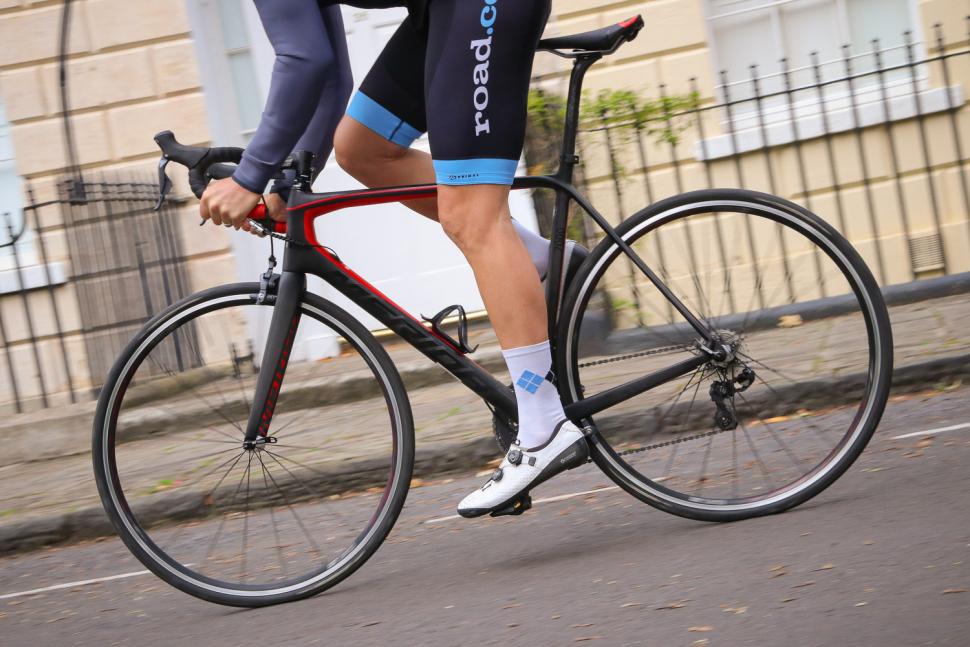
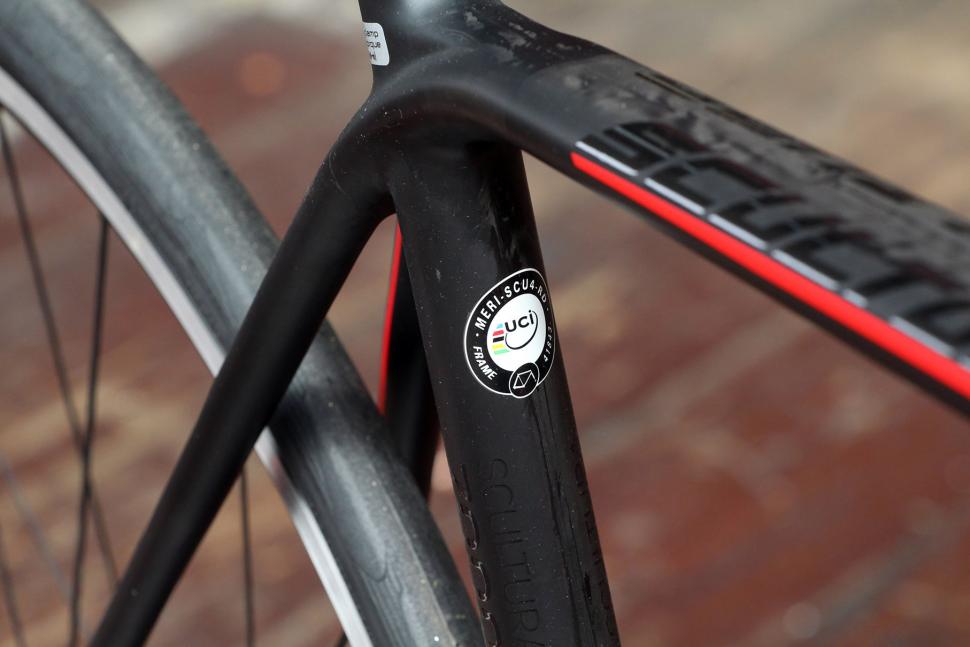

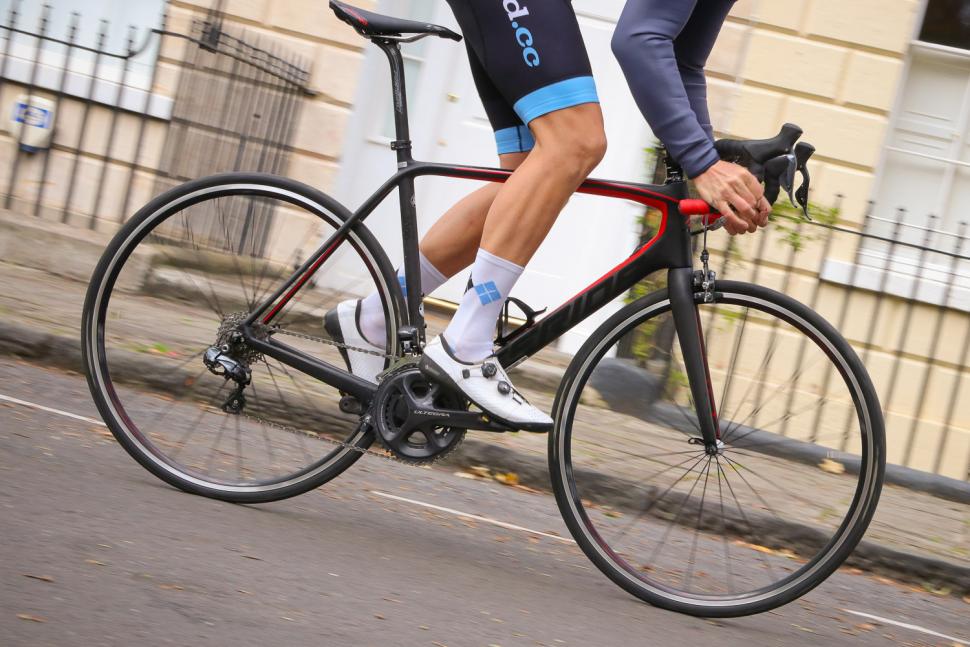
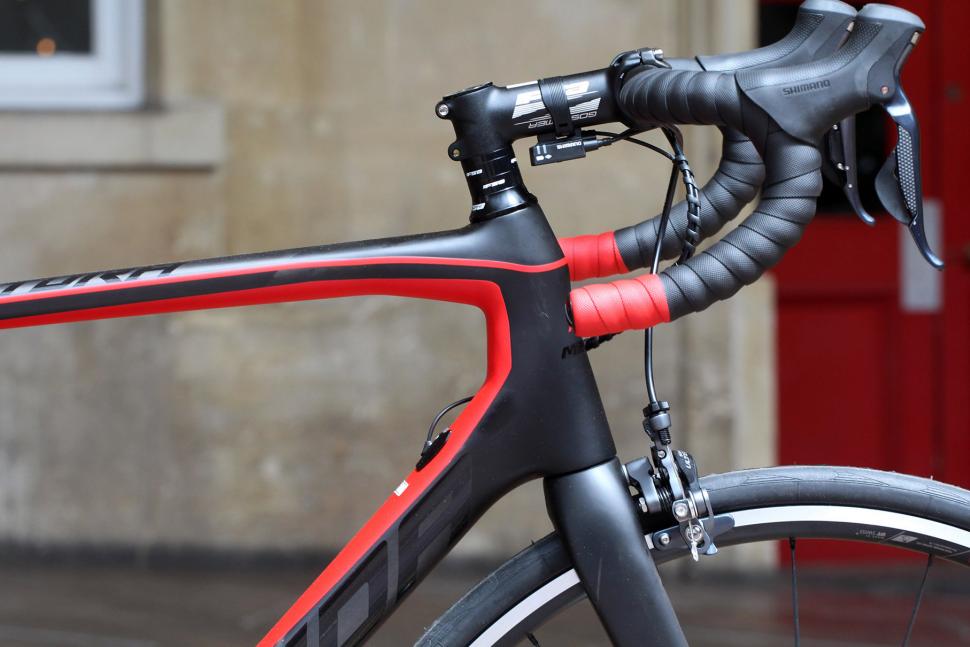

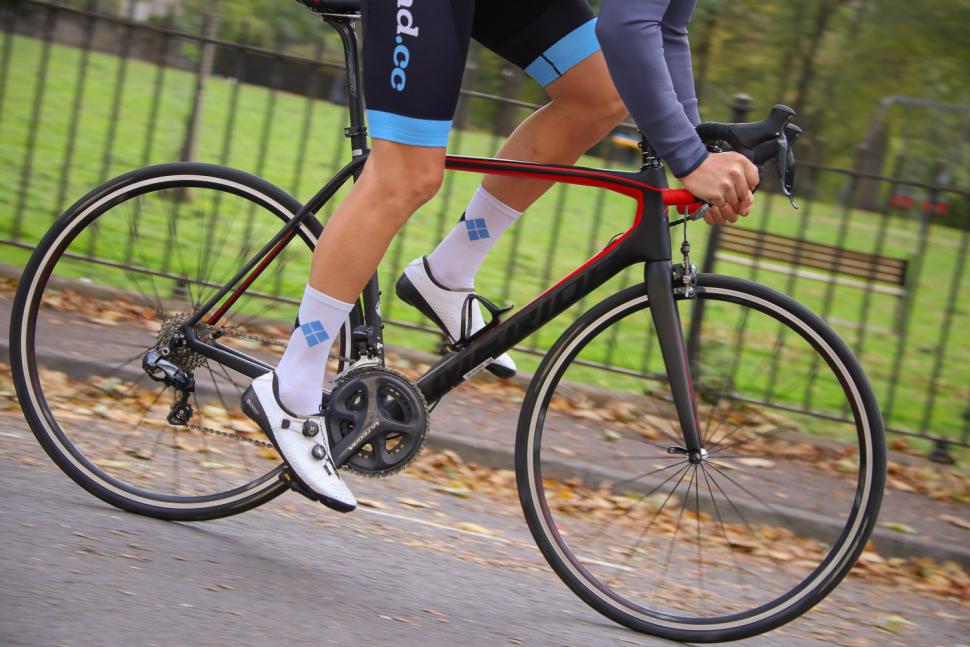

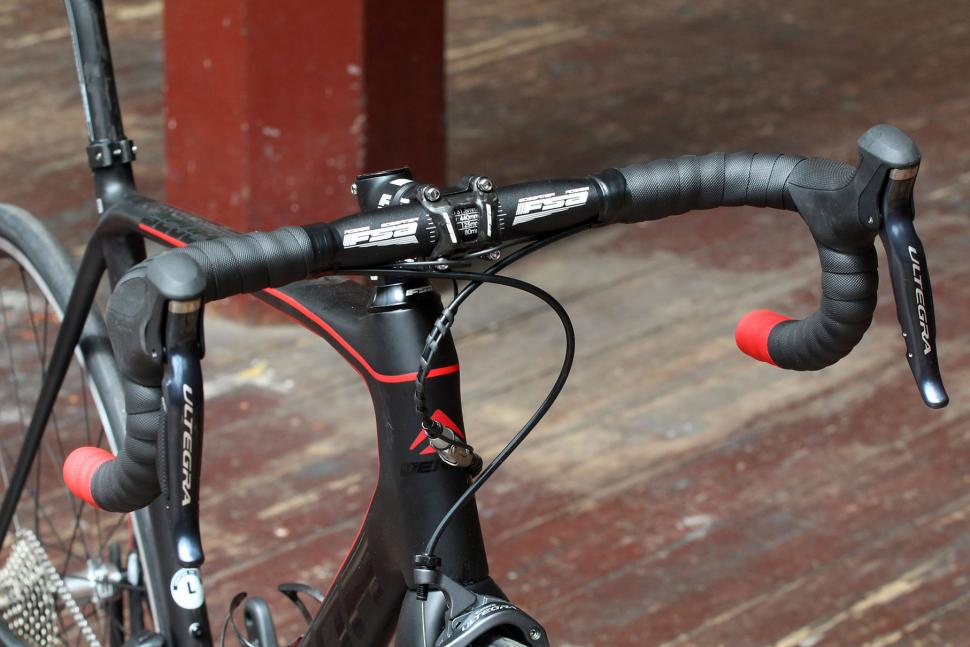

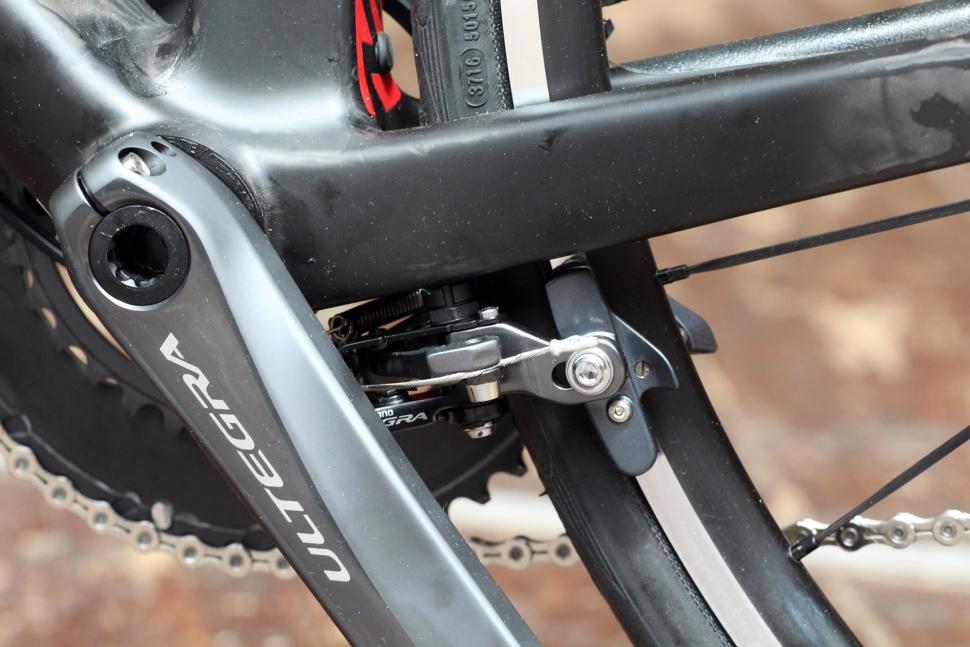
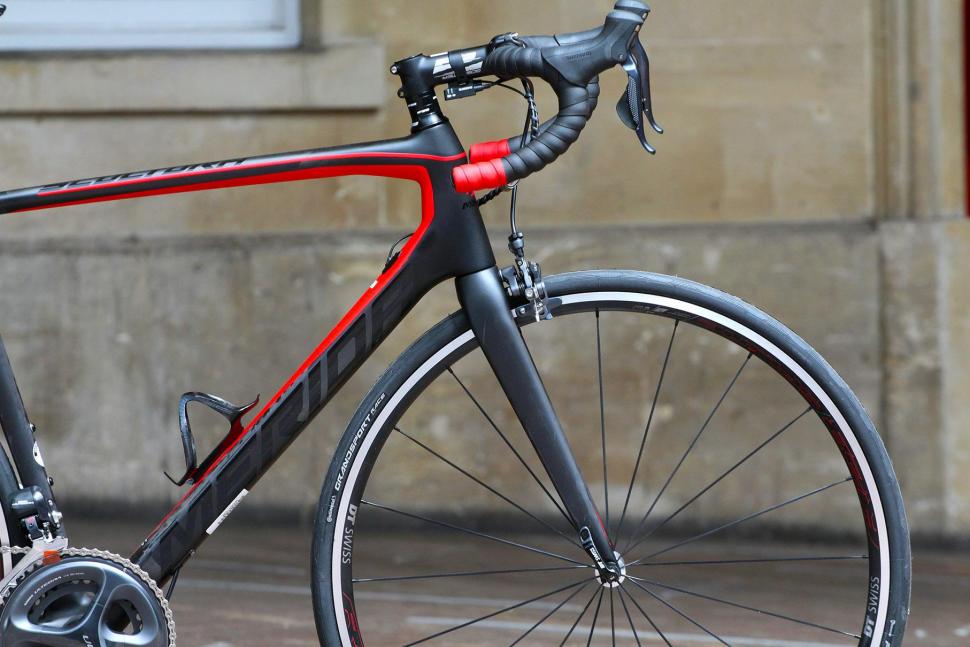
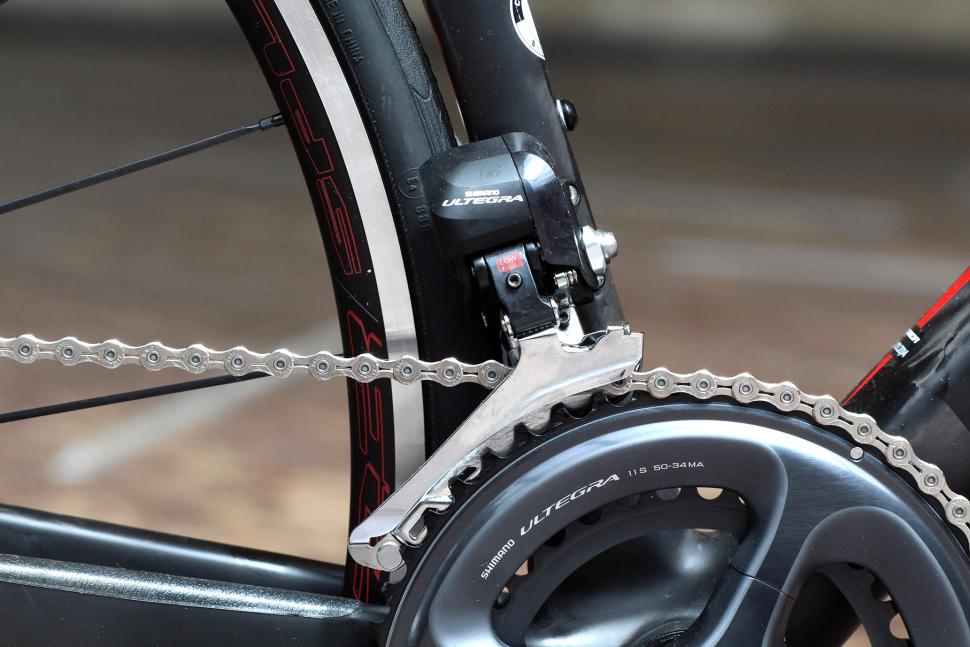

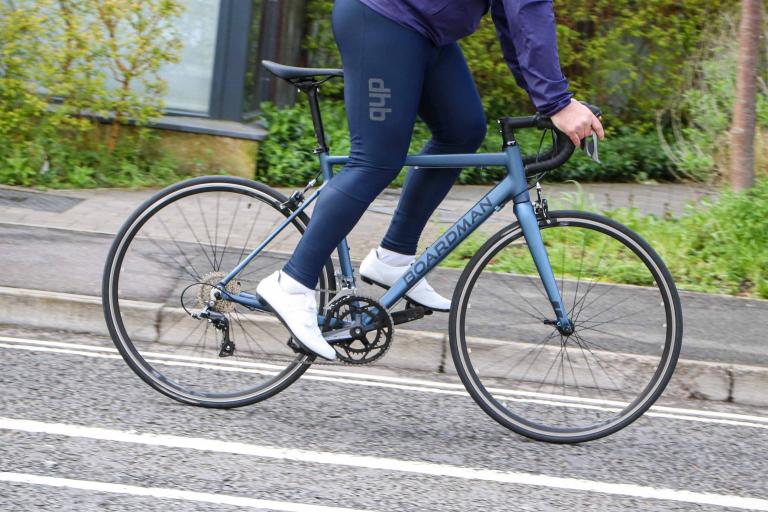
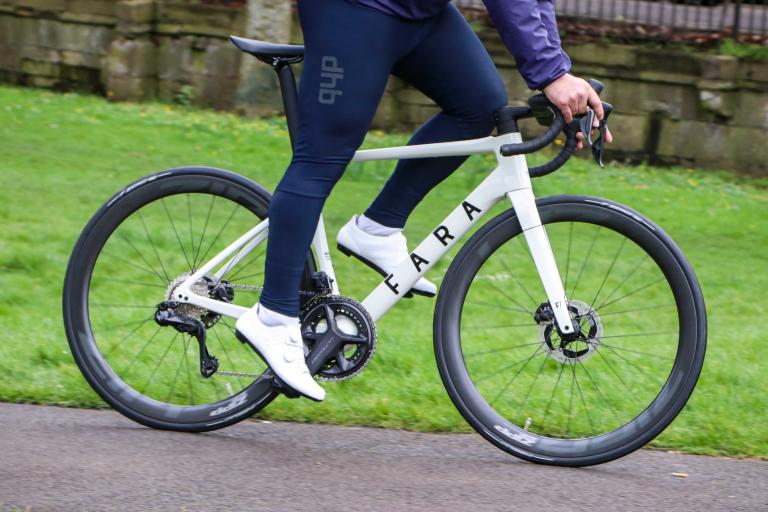
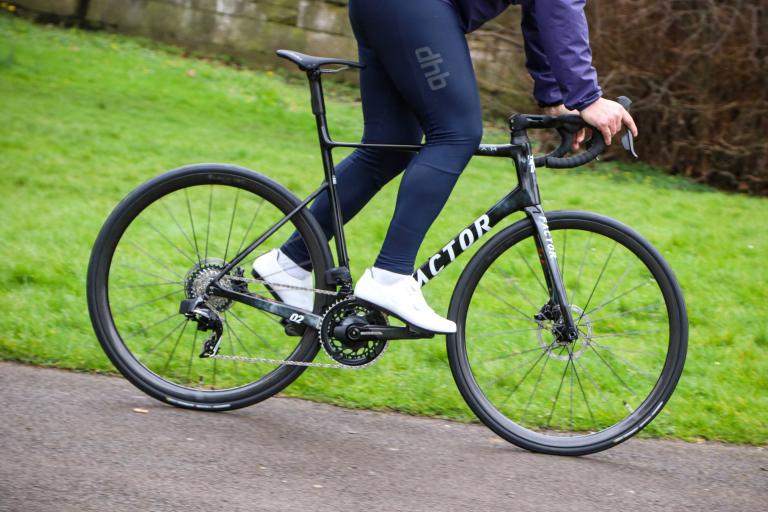
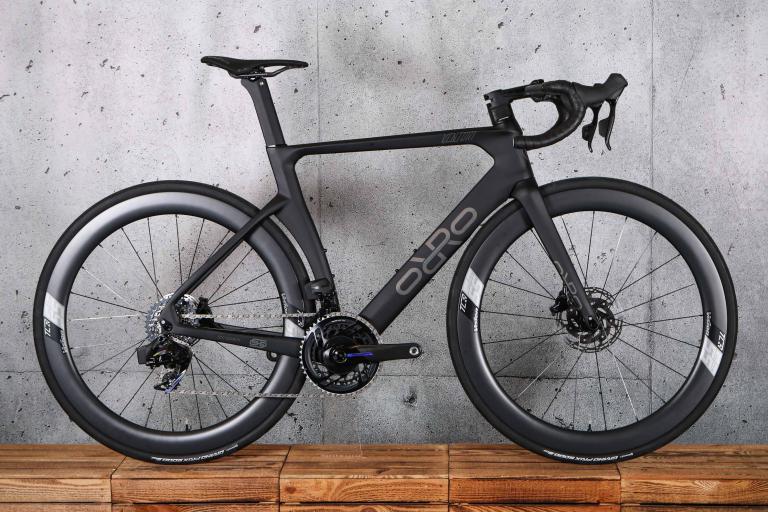
Add new comment
6 comments
I'll pipe in here for some more Merida love. I knew nothing about the brand when I bought my bike but when trying a few different brands the Scultura just felt right. I put some nice wheels on it and it absolutely flies - it feels like it just wants to get up and go. Plus, they can be a bargain: if you already have the components from an old bike then the bottom range carbon Sculturas use exactly the same frame as all but the wallet-melting top enders. Swap your bits over and you have a poor mans superbike.
Regarding the looks, I kind of agree, but also don't. They have been a bit logo-heavy in the past (easily fixed if you want - peel 'em off), but my bike which is black with swoopy green accents, has received many compliments and continues to receive them.
Merida seem generally underrated everywhere - even where I live, 8 hours from the UK, they're not really that popular.
Frame geometry is going to be down to personal preference and use case, but in terms of outright quality, they're right up there with Giant as arguably the top dogs in value-for-money bikes. For the longest time, they offered a previous-generation Scultura 903 here with full Tiagra 4600 componentry for a very competitive price - it was practically the cheapest way of buying into a carbon frame from an established big-name bike maker.
In some aspects, they even have Giant licked. The CX500 offers the same spec as a TCX SLR 2 for about 75-80% of the cost.
I accidentally discovered Merida a few years ago when my LBS was clearing out a Ride 93 carbon in my size, thinking it would be my winter ride. It looked deeply unflattering with its 10 speed Tiagra groupset and thousand spoke wheels. Only when I rode it I realised it was way stiffer yet far more comfortable than my three year old Bianchi, so I transplanted all the nice bits from that bike onto the Merida. The frame on the Ride 93 is the same as the still current Ride 4000, dropped seat stays, flax woven into the rears, internal Di2 compatible wiring (even had the old external battery mount screws on it). It's still going strong with Ultegra Di2, integrated aero handlebar and carbon wheels. Turned out to be an absolute bargain.
On the back of that I bought a Cyclo Cross 500 having never ridden one and it too is a fantastic bike that has seen a multitude of upgrades.
I'd agree neither are terribly special to look at, but I do think the graphics and paint work are getting a little better. The CX500 is an especially nice shade of blue. The new One Twenty 9.600 in copper and blue looks sensational (to me at least), as does the review One Forty 800 in yellow I've seen (though that bike seems to only be available in black in the UK).
I agree with the comment about Merida being underrated, I had a go on a friend's Scultura (luckily we're a very similar fit for bikes) and it was really lovely. Something about them just doesn't quite appeal as much though, I don't know if it's the lack of a heritage in the same way as Italian and french brands, and doesn't shout hi-tech like some of the German/American brands. Or maybe it's the really unflattering paint schemes they've had over recent years, I think if they got a good designer in and either looked more premium or a bit more out there they'd be on to a winner. They always seem a couple of years behind the trend in colours/graphics.
They can be a bit garish, but I've got a couple of Meridas (CX and reacto) and think they both look cracking, particularly the reacto (a black/grey combo).
I'm a bit more concerned about their recent involvement with a dodgy regime.
Merida do tend to just get on with making decent bikes with some really interesting technology - they are certainly up there in terms of cutting edge design - it's just that the features tend to be hidden away (e.g. in the carbon layup or subtle tube shaping), and they tend to be pretty crap at marketing. That and the fact that people don't tend to look very hard at what they are buying.
A good example is the S-flex zone on the seatpost of the Reacto bike - originally this was all done with Carbon, so apart from the graphics you'd never know anything was particularly different or special, but because people didn't notice they had to chop the almost redundant bit of seatpost away and shove in a bit of rubber. The fact that the rubber does bugger all for comfort and may well reduce aero peformance a little doesn't seem to matter - it meant people actally noticed it!
Specialzed are great at that sort of highly visible, but not necessarily any better type of design - the zertz inserts being a great example. What's funny there is that Merida actally make Specialized.
As for graphics, Merida were rubbish - they seemed to make up for a poor marketing strategy by trying to advertise their bikes with Merida logos plastered on every possible surface. They seem to be getting there now, but could do with having a little more confidance in their own brand name and start to play about with the font styles used - Giant are a good example here, with the decals on their road bikes taking a big step forward a couple of years back.